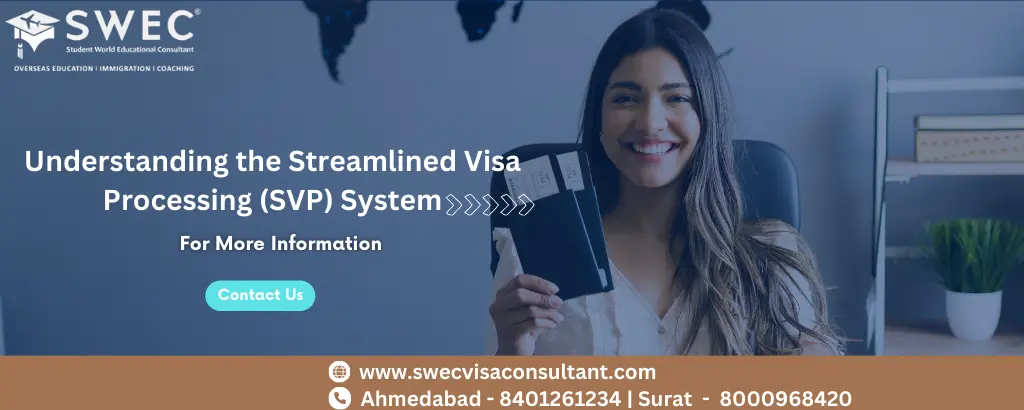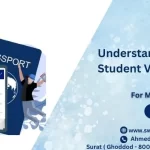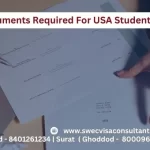The traditional student visa process for studying abroad, especially in countries like Australia, often involves many complexities. The procedure was lengthy, with multiple document requirements and longer waiting periods. For students, this meant added stress and uncertainty about their plans to study overseas. Recognizing these challenges, the Australian government introduced the Streamlined Visa Processing (SVP) System. This system aims to make the visa application process easier and faster, ensuring that students can focus on their educational journey without worrying about visa delays.
The main reason behind the introduction of the SVP system was to address the growing concerns of international students about visa processing times. The SVP system was established by the Australian government as a part of its commitment to improve the student visa process. The goal is to offer a faster, more straightforward visa process specifically for eligible students who are planning to pursue their higher education in Australia. It helps in reducing unnecessary delays and provides a smoother path for genuine students who have a clear academic and career plan.
Table of Contents
What is the Streamlined Visa Processing (SVP) System?
The Streamlined Visa Processing (SVP) System is a special visa application process designed to provide faster visa outcomes for international students applying to study at participating Australian universities. Introduced in 2012, the SVP system was a response to the increasing demand for a simplified and efficient visa process. Before its implementation, students had to go through the standard visa procedures, which often involved lengthy paperwork and longer processing times. The SVP system was introduced to make the process more efficient and student-friendly.
How the SVP System Works
Unlike the standard visa procedures, the SVP system streamlines the process by allowing eligible students to apply through a simplified visa pathway. Here’s how it works:
- Students who enrol in eligible courses at participating universities can apply for their student visas through the SVP pathway.
- These universities and education providers play a crucial role in the process as they are vetted by the Australian government to ensure they meet specific quality standards.
- The SVP system reduces the document requirements for these students, focusing more on genuine intent and eligibility rather than extensive financial checks.
Key Objectives of the SVP System
The primary objectives of the SVP system are:
- Reduced Processing Times: By streamlining the application requirements, the SVP system significantly cuts down on the time taken to process student visas.
- Improved Experience for Genuine Students: The system is tailored to ensure that students with clear academic goals and intentions face fewer hurdles in their visa application process.
Eligibility Criteria for the SVP System
To apply through the SVP system, students must meet certain basic requirements:
- Types of Students: The system primarily targets international students planning to enrol in higher education programs, such as undergraduate or postgraduate courses.
- Course Enrollment: The student must be enrolled in an eligible course offered by a participating education provider approved under the SVP framework.
Participating Education Providers
Only specific universities and educational institutions are part of the SVP system.
- Approved Institutions: These universities are carefully selected by the Australian government based on their reputation, compliance with visa regulations, and quality of education provided.
- Criteria for Selection: The Australian government considers factors such as the institution’s track record in hosting international students, the quality of their courses, and the support services they provide.
Academic and Financial Requirements
Applicants need to fulfil specific academic and financial criteria to qualify for the SVP system:
- Academic Requirements: Students must meet the minimum academic qualifications required for their chosen course. This typically includes high school graduation for undergraduate courses or relevant undergraduate degrees for postgraduate studies.
- Financial Requirements: Students are expected to provide proof of sufficient funds to cover their tuition fees and living expenses. Although the SVP process simplifies some financial checks, applicants must still show that they can support themselves during their stay in Australia. This may include bank statements, proof of scholarships, or sponsorship letters.
English Language Proficiency
English proficiency is a critical requirement for studying in Australia under the SVP system:
- Minimum Test Scores: Students must achieve minimum scores in recognized English language tests such as IELTS, TOEFL, or PTE. For most universities, an IELTS score of 6.0 or higher is generally required, but this can vary based on the course and institution.
- Alternative Options: For students who do not initially meet the language requirements, many universities offer pathway programs or English language courses. Completing these courses can help students meet the necessary language proficiency standards for their main academic programs.
Benefits of the Streamlined Visa Processing System
Faster Processing Times
One of the primary advantages of the Streamlined Visa Processing (SVP) System is its ability to significantly reduce the time it takes for student visa applications to be processed.
- Time Efficiency: The SVP system is designed to cut down the lengthy waiting periods associated with traditional visa applications, allowing students to receive their visa decisions faster.
- Comparison with Standard Processing Timelines: In the standard process, visa approval could take several months due to extensive documentation checks. Under the SVP system, the streamlined procedure focuses on key requirements, leading to quicker processing times. This is a big advantage for students who need to plan their travel, and accommodation, and start their studies on time.
Simplified Documentation
The SVP system is known for its simplified documentation requirements, making it easier for students to compile and submit their applications.
- Fewer Document Requirements: Unlike the traditional visa application process that involves extensive paperwork, the SVP system reduces the number of documents needed. For example, students often do not need to provide detailed financial evidence if they are applying through a participating education provider.
- Examples of Reduced Documentation: Under the SVP system, documents such as proof of employment history, extensive financial details, or multiple bank statements may not be required, provided the student meets the streamlined criteria set by their educational institution.
Greater Ease for Genuine Students
The SVP system is tailored to assist genuine temporary entrants (GTE), making the process easier for students who have a clear intention to study and return to their home country after completing their education.
- Focus on Genuine Students: The system prioritizes applicants who meet the GTE criteria, which means students with a clear academic and career plan have a higher chance of getting their visas approved quickly.
- Support for Students with Clear Goals: By focusing on genuine students, the SVP system reduces unnecessary scrutiny for applicants who demonstrate a legitimate interest in studying in Australia, thereby simplifying the overall process for these students.
Enhanced Opportunities for Indian Students
The SVP system has opened new avenues for Indian students aspiring to study in Australia.
- Specific Benefits for Indian Students: Given the large number of Indian students applying to Australian universities, the SVP system offers a more straightforward and efficient pathway for those who meet the eligibility criteria.
- Increased Chances of Visa Approval: By meeting the streamlined requirements, Indian students can significantly boost their chances of securing a student visa. The system’s focus on reducing paperwork and speeding up processing times makes it a favourable option for students from India.
Application Process for the SVP System
Step-by-Step Guide to Applying through the SVP System
Applying through the Streamlined Visa Processing (SVP) System is a straightforward process if you follow the right steps. Here’s a comprehensive guide:
Step 1: Research Participating Institutions and Eligible Courses
Begin by identifying universities and courses that are part of the SVP system. Check the latest list of participating education providers to ensure your chosen institution is eligible.
Step 2: Gather Necessary Documents
Prepare essential documents, including academic transcripts, certificates, proof of English proficiency, and financial documents. Having all your paperwork ready in advance can save you time during the application process.
Step 3: Apply to the Selected Education Provider
Submit your application to the participating university or college. Once accepted, you will receive an offer letter, which is a crucial requirement for your visa application.
Step 4: Submit the Student Visa Application via the SVP Pathway
Complete your visa application through the Department of Home Affairs website, selecting the SVP pathway. Ensure all details are accurate and provide the required supporting documents.
Key Documents Required
When applying through the SVP system, certain documents are essential to ensure a smooth process:
- Academic Transcripts and Certificates: Proof of your previous educational qualifications is required to demonstrate your eligibility for the chosen course.
- Proof of English Proficiency: You must provide results from recognized English language tests like IELTS, TOEFL, or PTE, showing you meet the minimum language requirements set by the institution.
- Financial Documents: Evidence of sufficient funds is necessary to cover tuition fees, living expenses, and travel costs. This may include bank statements, scholarship letters, or sponsorship documentation.
Tips for a Successful Application
Maximize your chances of a successful visa application by following these tips:
- Ensure Accuracy in the Information Provided: Double-check all the details you provide on your application form to avoid any discrepancies that could lead to delays or rejections.
- Submit All Required Documents promptly: Make sure you have all the necessary documents ready before submitting your application. Incomplete applications are one of the most common reasons for delays.
- Seek Professional Advice if Needed: If you are unsure about any part of the process, consulting visa experts like SWEC Visa can help you navigate the application smoothly and avoid common pitfalls.
Common Challenges in the SVP System
Eligibility Issues
While the SVP system aims to simplify the visa process, not all students may qualify due to strict eligibility requirements:
- Common Reasons for Ineligibility: Students who are not enrolled in courses offered by participating institutions or who do not meet the minimum academic or English language requirements may not qualify for the SVP pathway.
- Solutions for Ineligible Students: Students who do not meet the initial criteria can consider enrolling in pathway programs or preparatory courses that help them qualify for the SVP system in the future.
Document Verification Delays
One of the significant hurdles in the SVP process can be delays in document verification:
- Impact on Processing Times: Even though the SVP system is streamlined, delays can still occur if there are issues with verifying the documents provided by the student. This can lead to longer processing times.
- Tips to Expedite Verification: To speed up the process, ensure that all your documents are clear, properly scanned, and certified where necessary. Keeping all required documents ready and organized can help avoid delays.
Changes in University Participation
The list of participating universities under the SVP system may change, impacting students’ eligibility:
- Impact of Changes in Participation: If a university withdraws from the SVP system or is removed from the approved list, students applying to that institution may no longer be eligible for streamlined processing.
- Advice for Applicants: Always check the latest list of approved institutions before starting your application process to ensure your chosen university is part of the SVP system. Consulting with an expert like SWEC Visa can help you stay updated on these changes and make informed decisions.
Tips for a Successful SVP Application
Prepare Documents Early
One of the key strategies for a smooth visa application process under the Streamlined Visa Processing (SVP) System is early preparation of your documents.
- Importance of Early Preparation: Starting the document collection process well in advance can help you avoid last-minute hassles. Gathering all necessary documents early gives you enough time to address any issues or obtain missing information.
- Create a Checklist: To stay organized, create a comprehensive checklist of all required documents. This may include academic transcripts, English proficiency test scores, proof of financial stability, and identification papers. Using a checklist helps ensure that you don’t overlook any critical documents, which can delay your application.
Accurate and Complete Application
An error-free and detailed application is crucial for a successful outcome under the SVP system.
- Double-Check All Information: Carefully review all the details on your application form. Errors, especially in financial and academic information, can lead to delays or even rejection. It’s important to ensure that your documents are accurate, updated, and match the details provided in your application.
- Importance of Accuracy: Even minor mistakes, like incorrect names or dates, can cause issues. Providing consistent and accurate financial details is also essential to prove you have sufficient funds to cover your tuition and living expenses.
Seek Guidance from a Visa Consultant
Applying for a student visa can be a complex process, especially for first-time applicants. Consulting with an expert can make a significant difference.
- Benefits of Professional Guidance: Visa consultants, such as SWEC Visa, have extensive experience in handling student visa applications. They can help you understand the requirements, gather the necessary documents, and submit your application accurately.
- Increased Chances of Success: Professional advice can help you avoid common mistakes and improve your chances of getting your visa approved. With expert guidance, you can navigate the process more confidently and increase your chances of a successful outcome.
Impact of the SVP System on International Students
Increased Number of Applications
The implementation of the SVP system has had a notable impact on the number of international students applying to study in Australia.
- Growth in Applications: The streamlined process has made it easier and faster for students to obtain visas, leading to a significant increase in applications. The simplified documentation and faster processing times have attracted more students from around the world.
- Statistics on Growth: Since the introduction of the SVP system, there has been a steady rise in the number of student visas granted. For instance, data shows a considerable increase in the number of Indian and Chinese students enrolling in Australian universities due to the benefits of streamlined processing.
Positive Experience for Genuine Students
The SVP system has greatly improved the experience for genuine students who plan to study in Australia.
- Student Testimonials: Many students have shared positive feedback about their visa application process under the SVP system. The faster processing times and reduced documentation requirements have made it less stressful and more convenient for them.
- Enhanced Satisfaction: Genuine students with clear academic and career goals have benefited the most, as the system prioritizes their applications, reducing the uncertainty and anxiety typically associated with visa processing.
Encouragement of High-Quality Applicants
The SVP system not only simplifies the visa process but also aims to attract high-quality students who have strong academic records and clear career ambitions.
- Attracting Talented Students: By making the process simpler for students who meet specific academic and financial criteria, the SVP system has become a magnet for high-achieving students worldwide. This helps Australian universities attract a higher calibre of students, enhancing the overall quality of the student body.
- Impact on University Admissions: The focus on quality applicants has led to improved academic standards and outcomes at participating universities, as students are more likely to succeed academically and complete their courses.
Changes to the SVP System: What’s New?
Updates to the List of Participating Institutions
The list of universities and institutions participating in the SVP system is subject to regular updates.
- Recent Changes: Over the years, there have been changes in the list of approved universities, with some institutions joining and others being removed based on their performance and compliance with SVP guidelines.
- Staying Informed: Students should regularly check the official Department of Home Affairs website or consult with visa experts like SWEC Visa to stay updated on the latest list of participating institutions. This ensures that they choose an eligible university for their application.
Policy Changes and Their Implications
The SVP system has undergone several policy changes since its introduction, impacting how the visa application process is managed.
- Recent Policy Changes: Updates may include changes in eligibility criteria, documentation requirements, or the process for selecting participating institutions. For example, there might be adjustments in the minimum English language proficiency scores or financial proof requirements.
- Implications for Students: These changes can have a significant impact on prospective students, affecting their eligibility and the overall application process. Staying informed about the latest policy updates is crucial for students planning to apply under the SVP system. Consulting with professionals like SWEC Visa can help students navigate these changes and understand their implications.
Alternatives to the SVP System
While the Streamlined Visa Processing (SVP) System offers a fast-tracked pathway for student visa applications, it is not the only option available for international students. Let’s explore some alternatives:
Standard Visa Processing
The regular student visa process remains an option for those who do not qualify for the SVP system.
- Overview of Standard Processing: The standard visa process involves a detailed assessment of the applicant’s eligibility, including academic background, financial capacity, and Genuine Temporary Entrant (GTE) requirements. It typically requires more extensive documentation and can take longer to process compared to the SVP pathway.
- When to Choose Standard Processing Over SVP: Standard processing may be a better choice for students whose preferred institutions do not participate in the SVP system or for those who do not meet the specific eligibility criteria of the SVP. It is also suitable for students applying to non-degree courses or shorter vocational training programs that are not covered under the SVP system.
Simplified Student Visa Framework (SSVF)
The Simplified Student Visa Framework (SSVF) is another popular alternative that has been implemented to further streamline the student visa process.
- Overview of SSVF: Introduced by the Australian government as a replacement for the SVP system, the SSVF aims to simplify visa categories and provide a single student visa (subclass 500) for all study types. It emphasizes a risk-based approach to documentation requirements, focusing on the applicant’s nationality and education provider’s risk level.
- Key Differences Between SVP and SSVF: While SVP primarily focuses on reducing processing times for students applying to eligible institutions, SSVF offers a more inclusive approach. Under SSVF, students from all countries applying to any registered education provider are considered, with requirements adjusted based on the perceived risk associated with the student’s profile and chosen institution.
Conclusion
The Streamlined Visa Processing (SVP) System has been a game-changer for international students aspiring to study in Australia. By simplifying the visa process and reducing processing times, it has opened new opportunities for genuine students.
Summary of Key Points
- The SVP system offers faster processing times and simplified documentation, making it an attractive option for eligible students.
- Understanding the eligibility criteria, application process, and potential challenges is crucial for a successful visa application.
- Alternatives like the Standard Visa Processing and Simplified Student Visa Framework (SSVF) provide other pathways for students who may not qualify for the SVP system.
Applying for a student visa can be a daunting process, but with proper preparation and understanding of the SVP system, students can navigate it successfully. The SVP system, with its streamlined approach, aims to support genuine students who are focused on their academic and career goals in Australia.
At SWEC Visa, we specialize in helping students through every step of the visa application process. Whether you need assistance with document preparation, understanding eligibility requirements, or navigating policy changes, our experienced consultants are here to guide you. Contact SWEC Visa today for personalized support and start your journey towards studying in Australia with confidence!







